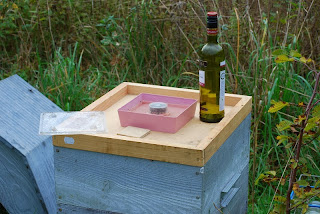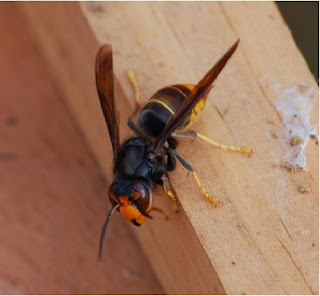Having built and operated the website planetepassion for many years and more recently Wildlife in France as well as writing the wildlife section for Living Magazine I have often toyed with the idea of a Blog to create a space where I could be more immediate and write more about day to day matters. Now the time has come "to get started", but where to begin?
Best to start by explaining a little about where we live, our attitude to wildlife biodiversity and the environment in both the wider world and our own little piece of the planet we own and manage. For me achieving maximum species diversity is paramount within the constraints of what would be present or perhaps historically was present in a given region providing those previous conditions can still be met. Evidently it isn't possible to put back heath-land where a city has been built and there are many localities where that type of situation exists which we can only make the best of. Fortunately that wasn't a situation we inherited some 18 years ago when we purchased our cottages and land here in the west of France, even though a large part of our three hectares had been intensively cultivated with sunflowers, wheat, barley and oil seed rape for many years, all regularly dosed with "cides" - (herbicides, pesticides, fungicides and probably any other poisons you can think of).
First action plan for us and simple to initiate was zero or as near to zero as possible use of chemical products anywhere on the property, house and land, this in itself raises the quantity of species both in variety and population numbers significantly in a fairly short time frame, certainly observable within three years.
Second action plan was to see what was required from our land by understanding what had been historically in the region before the cereal production swept all aside in the 1980's with the "de-bocage", (the removal of hedged fields), to create ever larger fields that leaves very little if any land area uncultivated except for the small woodlands and copses.
Third action plan was to leave most of the land alone to see what happened which turned out to be very interesting with some surprising results.
Fourth action plan was to get set up for bee keeping and get some bees which would also be managed with no artificial substances introduced to the hives other than syrup if required and with the minimum of intervention and manipulation.
Fifth action plan is that nothing is killed or harmed unless deemed totally necessary or by accident. This is strictly adhered to enabling a balanced food structure for species to develop in a natural manner over time.
I'm sure there is a Sixth action plan but no doubt that will reveal itself in time as the points above are revisited and looked at in greater detail.
These two photos give some idea of what we started with in the top photo and how things changed in the first year in the bottom photo.
The most obvious initial growth other than grasses was Creeping thistle, Cirsium arvense. Named in French Chardon des champs, (literally Thistle of the fields), this is a well known robust plant that manages to survive the plow and the sprays by virtue of its deep creeping roots where even a small piece will rapidly spread into several "plants". Interestingly we have found it gradually expends itself if left alone providing the soil is neither feed or disturbed other than superficially. As we were aiming broadly for a poor, sparse meadow type habitat over time this didn't present any issues, in fact that and the grasses helped to take out any excess nitrates and other feeds.

In the Vienne and in many other Departements of France it's legally possible to be ordered to cut thistles of any type and prevent them from flowering to prevent the seeds spreading to other gardens and fields. In practice this is unlikely to happen unless you live in a hamlet and the neighbors complain. In fact it's not unknown in France for the Maire to order a person to keep their garden or land closely cut even on the periphery of a hamlet or village. Some farmers have even suggested that land should be forcibly removed from people that fail to control Creeping thistle. From a strictly wildlife perspective in the right habitat it's a fantastic plant for so many species including honey bees.
The next photo is one of my favorites of Creeping thistle that shows just how sought after the flowers are.
Chris











.jpg)
.jpg)









